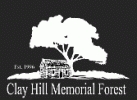


Wetland Succession
For as long as anyone here can remember, this pond has been here. It is spring-fed and the level of water in it changes over seasons as the amount of water in the ground changes. But most of the time, the ground remains saturated with water. Most of the plants that live here are adapted to living in wet soils. They don't mind having their feet wet. Some of them even have air tubes that supply oxygen to the roots. The trees that grow here include sycamore, river birch, black willow and bald cypress. Cardinal flower and spider lily are two of the most beautiful wildflowers that grow here. Wetlands are incredibly important to animals. The great blue heron comes here to feed. White tail deer, turkey, racoon and opossum come here for water. Salamanders and frogs use this pond to mate and produce juveniles that mature here.
Unfortunately, wetlands are among our most endangered habitats. Kentucky has lost most of it's wetlands. These areas were not suitable for farming until the water was drained from them. If left alone many of them would have drained by themselves as they tend to fill with soil. Plants and animals modifiy their wetland homes making them drier and drier. Eventually, this site may become a wet forest by natural progression of ecological succession. Until that happens this pond is home to a complex community of insects, salamanders and frogs. Somewhere between 500-1000 eastern spotted newts call this pond their home. Several other amphibian species migrate to this pond to reproduce.
Published 9 May 2014 Last modified 12 February 2018 © Clay Hill Memorial Forest 2014